Top Rankings
Jacksonville North Pulaski School District ranks among the top 20% of public school district in Arkansas for:
Category
Attribute
Diversity
Most diverse schools (Top 1%)
Community Size
Largest student body (number of students) (Top 1%)
For the 2025 school year, there is 1 public high school serving 1,165 students in Jacksonville North Pulaski School District. This district's average high testing ranking is 1/10, which is in the bottom 50% of public high schools in Arkansas.
Public High School in Jacksonville North Pulaski School District have an average math proficiency score of 11% (versus the Arkansas public high school average of 30%), and reading proficiency score of 21% (versus the 40% statewide average).
Public High School in Jacksonville North Pulaski School District have a Graduation Rate of 78%, which is less than the Arkansas average of 88%.
The school with highest graduation rate is Jacksonville High School, with 78% graduation rate. Read more about public school graduation rate statistics in Arkansas or national school graduation rate statistics.
Minority enrollment is 73% of the student body (majority Black), which is more than the Arkansas public high school average of 41% (majority Black).
Overview
This School District
This State (AR)
# Schools
7 Schools
376 Schools
# Students
4,451 Students
177,605 Students
# Teachers
322 Teachers
18,608 Teachers
Student : Teacher Ratio
14:1
14:1
District Rank
Jacksonville North Pulaski School District, which is ranked within the bottom 50% of all 258 school districts in Arkansas (based off of combined math and reading proficiency testing data) for the 2021-2022 school year.
The school district's graduation rate of 78% has decreased from 87% over five school years.
Overall District Rank
#228 out of 259 school districts
(Bottom 50%)
(Bottom 50%)
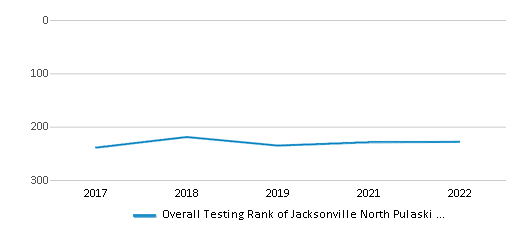
Math Test Scores (% Proficient)
17%
38%
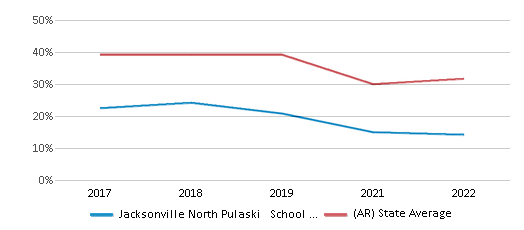
Reading/Language Arts Test Scores (% Proficient)
22%
40%
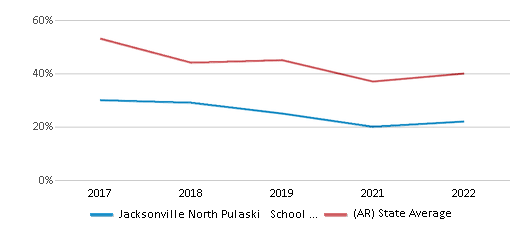
Science Test Scores (% Proficient)
18%
36%
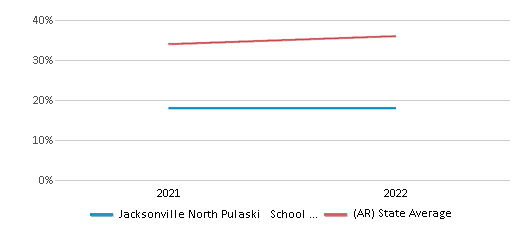
Graduation Rate
78%
88%

Students by Ethnicity:
Diversity Score
0.62
0.59
# American Indian Students
20 Students
1,045 Students
% American Indian Students
n/a
1%
# Asian Students
33 Students
3,011 Students
% Asian Students
1%
2%
# Hispanic Students
423 Students
26,629 Students
% Hispanic Students
10%
15%
# Black Students
2,360 Students
32,787 Students
% Black Students
53%
18%
# White Students
1,322 Students
105,628 Students
% White Students
30%
59%
# Hawaiian Students
6 Students
1,753 Students
% Hawaiian Students
n/a
1%
# Two or more races Students
287 Students
6,752 Students
% of Two or more races Students
6%
4%
Students by Grade:
# Students in PK Grade:
277
20
# Students in K Grade:
318
225
# Students in 1st Grade:
378
274
# Students in 2nd Grade:
381
309
# Students in 3rd Grade:
341
312
# Students in 4th Grade:
328
321
# Students in 5th Grade:
334
388
# Students in 6th Grade:
289
1,073
# Students in 7th Grade:
321
9,307
# Students in 8th Grade:
319
16,101
# Students in 9th Grade:
337
39,879
# Students in 10th Grade:
305
39,369
# Students in 11th Grade:
276
37,430
# Students in 12th Grade:
247
32,498
# Ungraded Students:
-
99
District Revenue and Spending
The revenue/student of $13,977 is higher than the state median of $13,132. The school district revenue/student has declined by 10% over four school years.
The school district's spending/student of $16,594 is higher than the state median of $13,043. The school district spending/student has declined by 10% over four school years.
Total Revenue
$62 MM
$6,371 MM
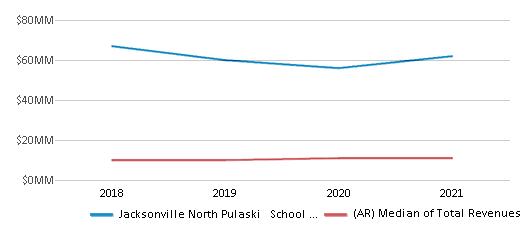
Spending
$74 MM
$6,327 MM
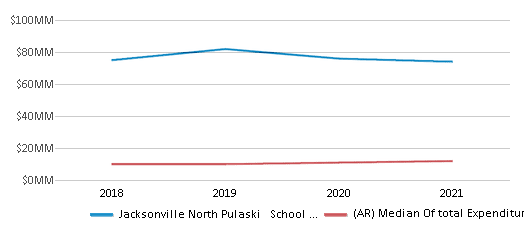
Revenue / Student
$13,977
$13,132
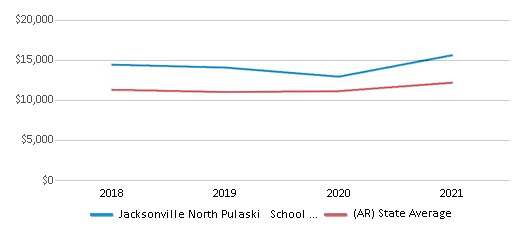
Spending / Student
$16,594
$13,043
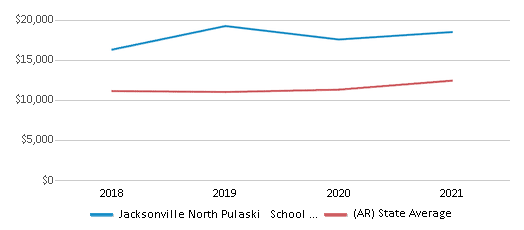
Best Jacksonville North Pulaski School District Public High Schools (2025)
School
(Math and Reading Proficiency)
(Math and Reading Proficiency)
Location
Grades
Students
Rank: #11.
Jacksonville High School
(Math: 11% | Reading: 21%)
Rank:
Rank:
1/
Bottom 50%10
1301 West Main Street
Jacksonville, AR 72076
(501) 982-2128
Jacksonville, AR 72076
(501) 982-2128
Grades: 9-12
| 1,165 students
Recent Articles

Year-Round Or Traditional Schedule?
Which is more appropriate for your child? A year-round attendance schedule or traditional schedule? We look at the pros and cons.

Why You Should Encourage Your Child to Join a Sports Team
Participating in team sports has a great many benefits for children, there is no doubt. In this article you will learn what those benefits are.

White Students are Now the Minority in U.S. Public Schools
Increasing birth rates among immigrant families from Asia and Central and South America, combined with lower birth rates among white families, means that for the first time in history, public school students in the United States are majority-minority. This shift in demographics poses difficulties for schools as they work to accommodate children of varying language abilities and socio-economic backgrounds.





